Chemistry and Chemists № 2 2024
Journal of Chemists-Enthusiasts
| Content | Chemistry experiments - video | Physics experiments - video | Home Page - Chemistry and Chemists |
|
Chemistry and Chemists № 2 2024 Journal of Chemists-Enthusiasts |
Plants as acid-base indicators - part 8, 9 Volodymyr M. Viter |
|
Having noticed a mistake in the text, allocate it and press Ctrl-Enter
An apple tree with pink flowers has already been mentioned in the article. Initially, the tree that I thought was an apple tree turned out to be a cherry tree (sakura). However, there are also apple trees bearing pink flowers. In Ukraine, this plant is called the "paradise apple" (райское яблоко) and its scientific name is Malus prunifolia (Plumleaf crab apple, Chinese crabapple). The tree is grown primarily as an ornamental to decorate parks and gardens, although they make a delicious jam from the small fruits of Plumleaf crab apple tree.
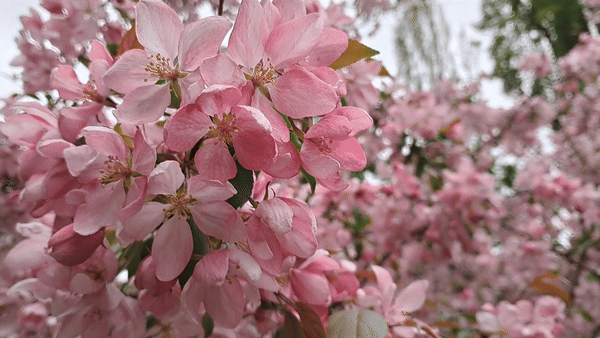 Pink flowers must change colour when exposed to ammonia. Even if the final colour of the petals is unattractive, the very transformation of pink flowers into something unsightly will look impressive. The experiment can be demonstrated as "Chemical black magic". The problem is that to describe the experiment you need to know the exact name of the object. In our case, it is necessary to indicate the biological species and variety of the plant. The names listed above do not refer to one cultivar but to a group of apple tree varieties that produce small fruits. Some of these varieties have white flowers rather than pink. The colour of the fruit also varies (yellow or red). It is difficult to say which variety I experimented with, so I will refrain from hypotheses. I placed pink apple flowers in a glass and added a concentrated ammonia solution. The petals quickly turned gray-violet. But the colour change did not end there. The flowers gradually turned yellow. I repeated the experiment with pink flowers from another apple tree (probably the same variety) - the result was similar (the intensity was different, but the colours were the same). Later I noticed apple trees with burgundy (dark red) flowers and got interested. Would the colour changing of these flowers in an alkaline medium be different? The result is described in the next part of the article. |
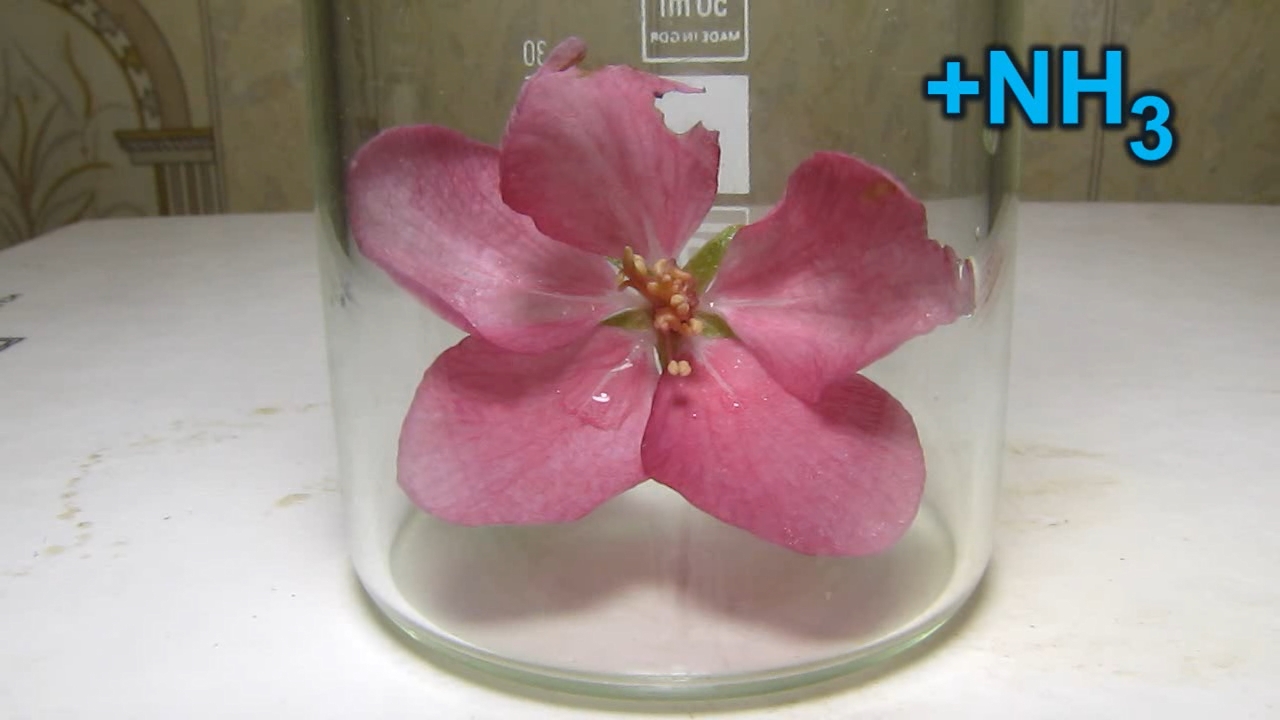
Pink flowers of apple tree and ammonia (experiment 1) |
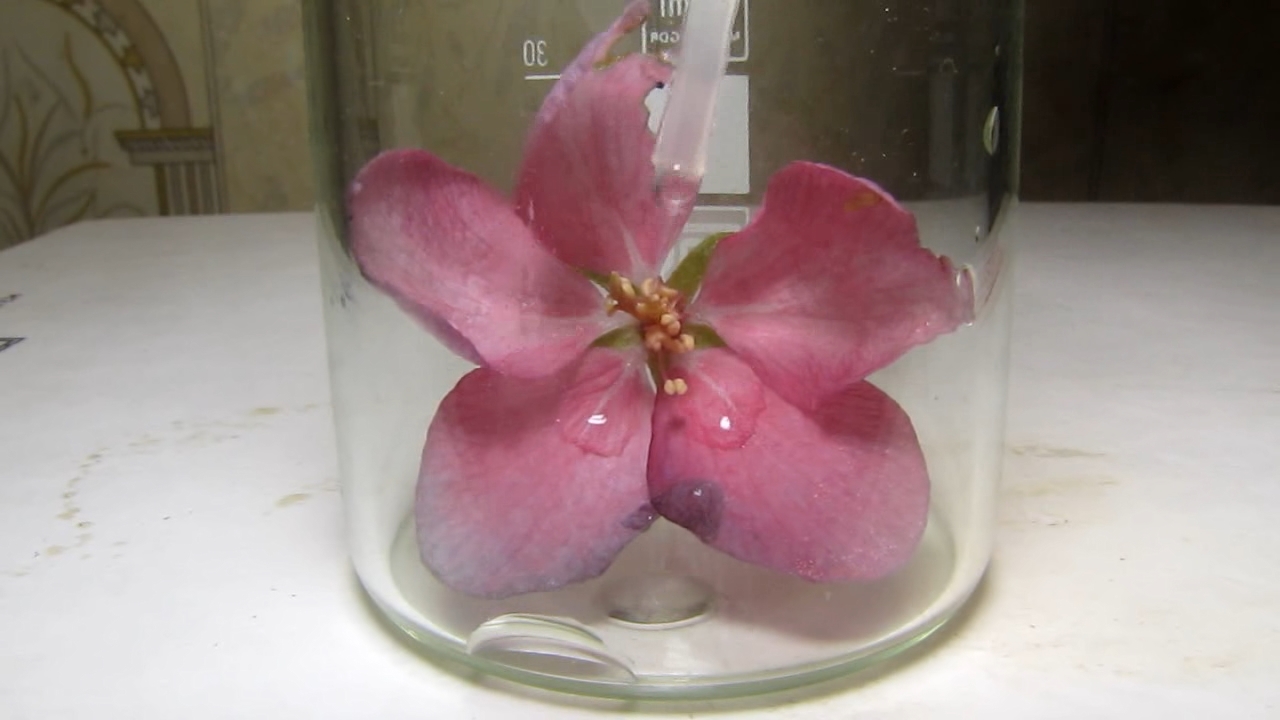
|
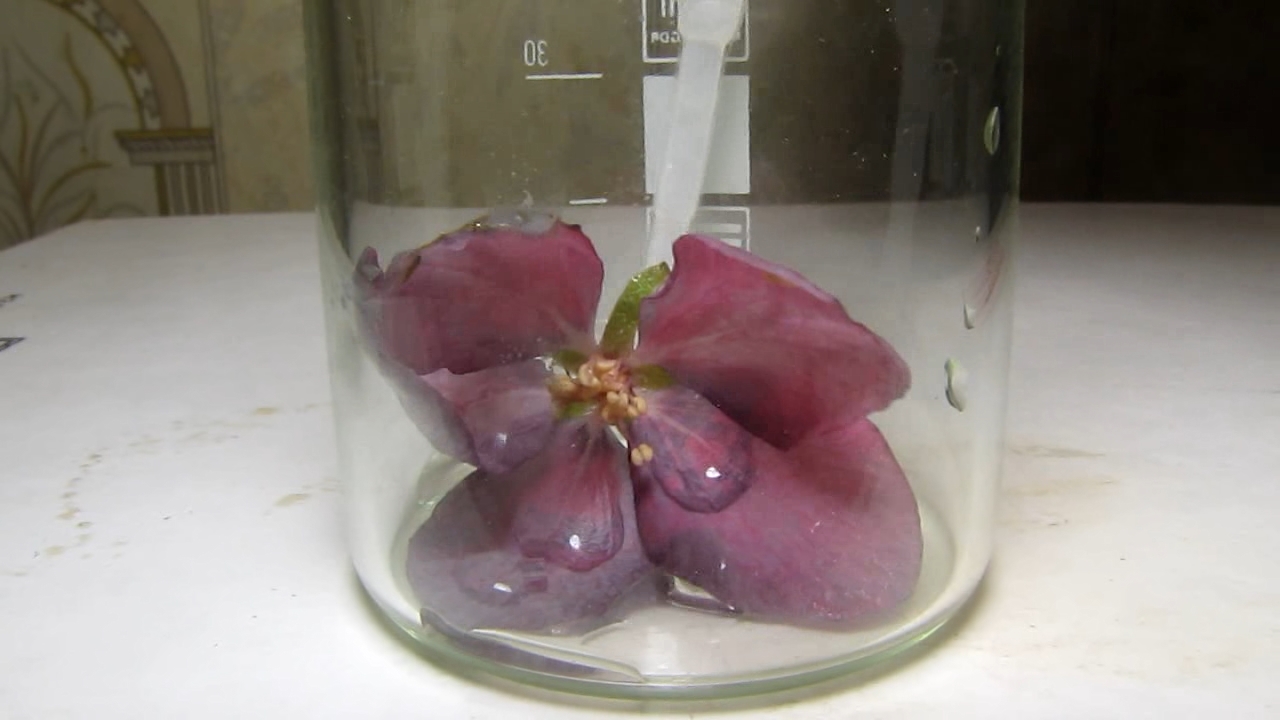
|
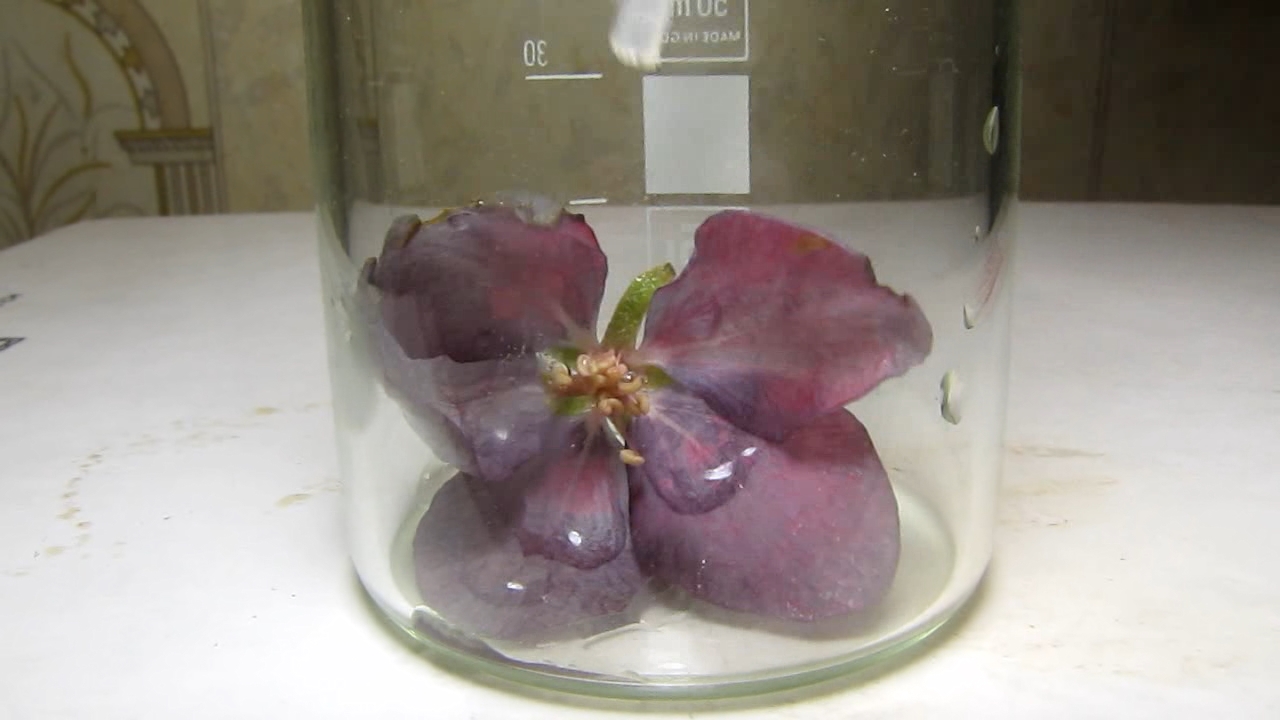
|

|
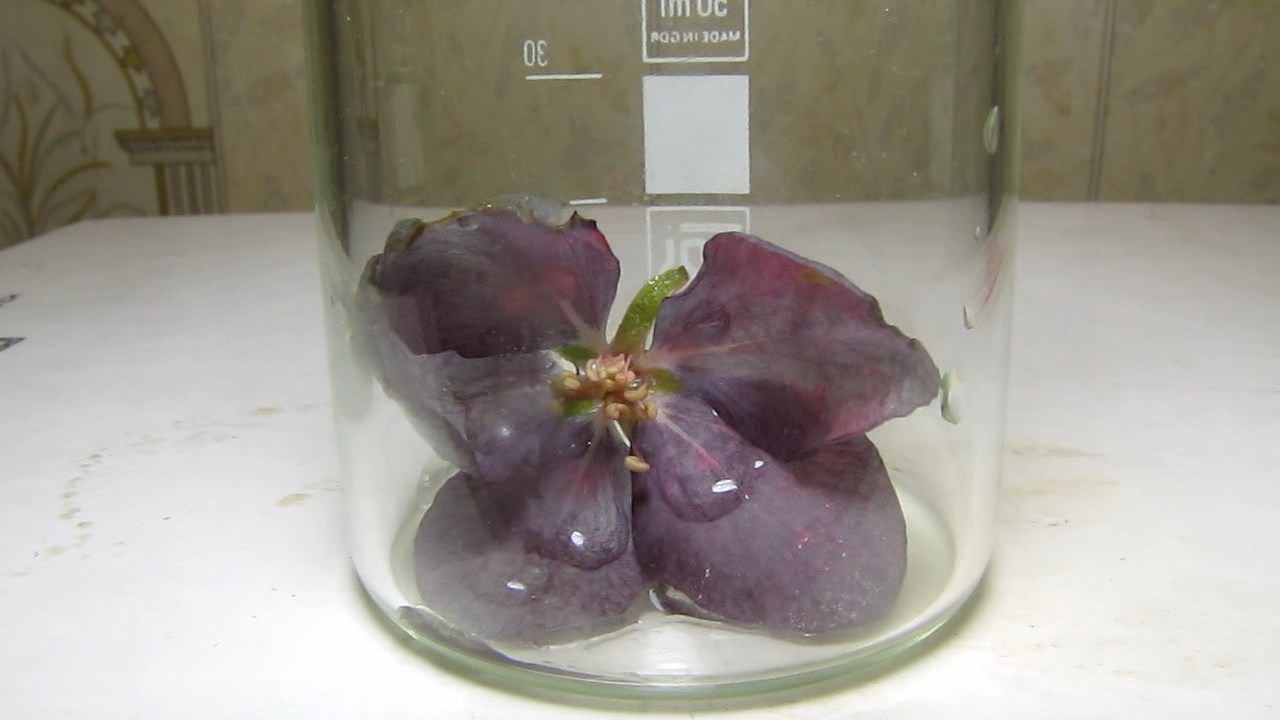
|
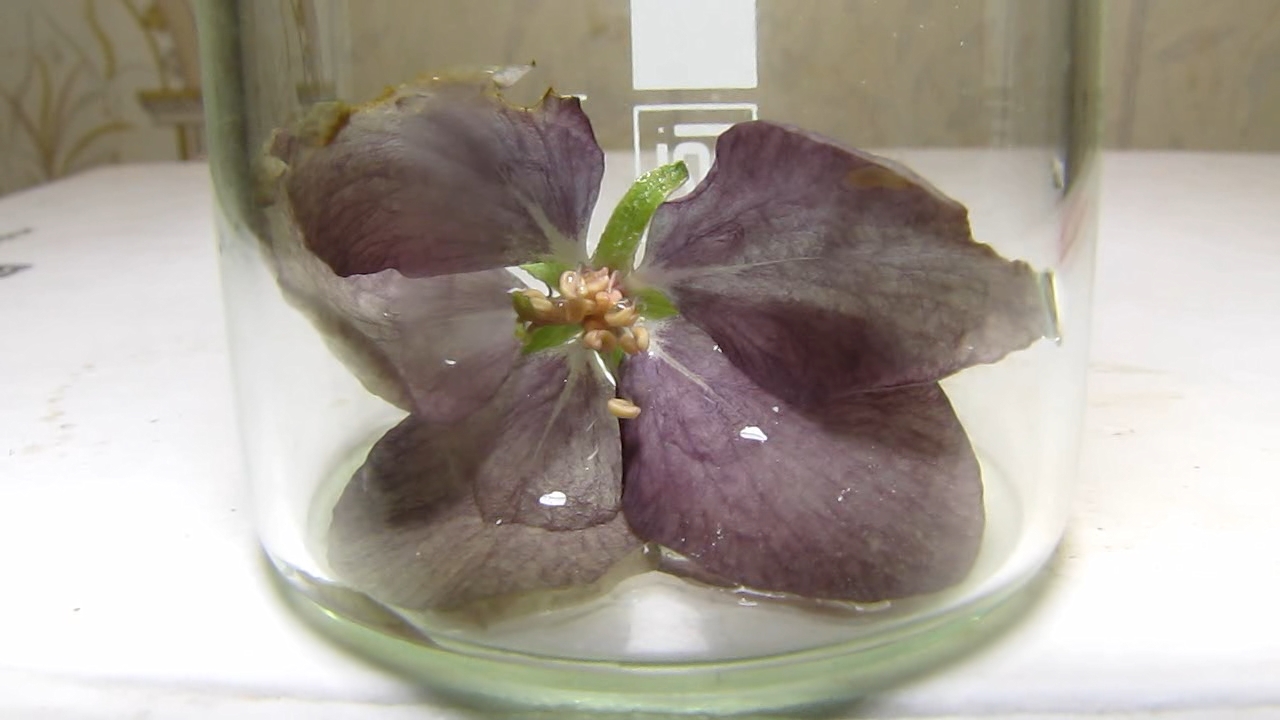
|

|

|
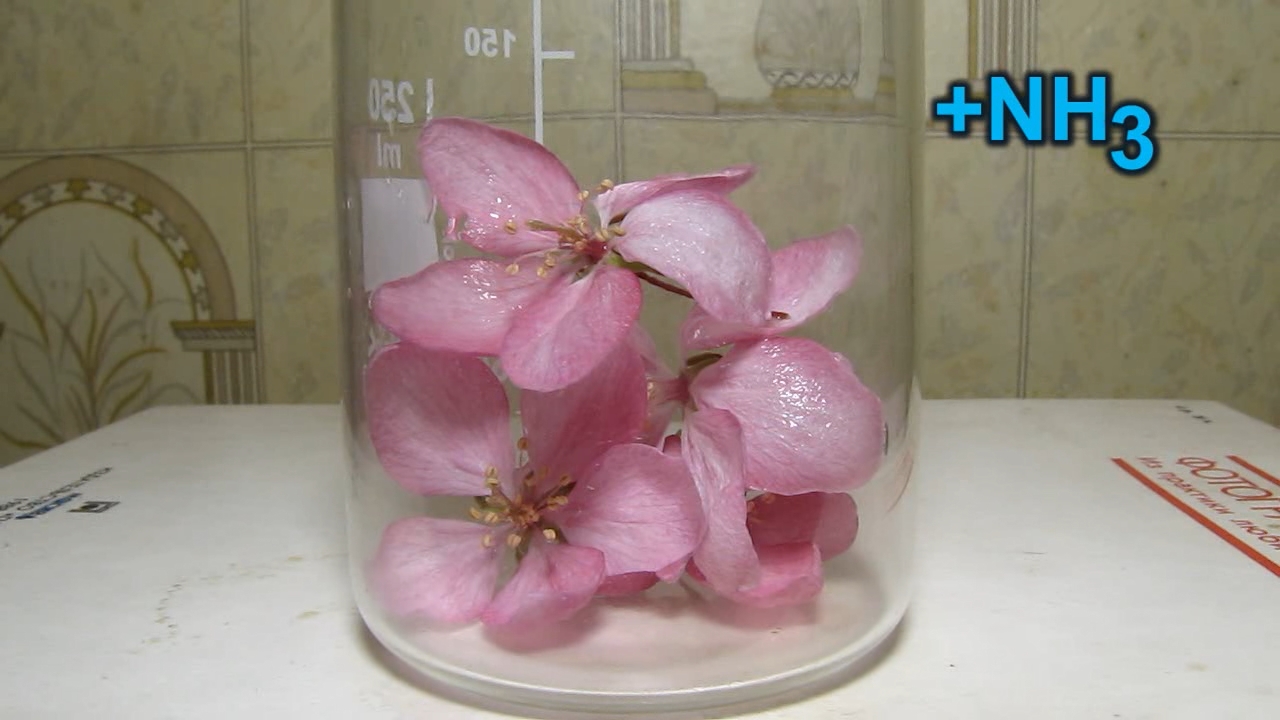
Pink flowers of apple tree and ammonia (experiment 2) |
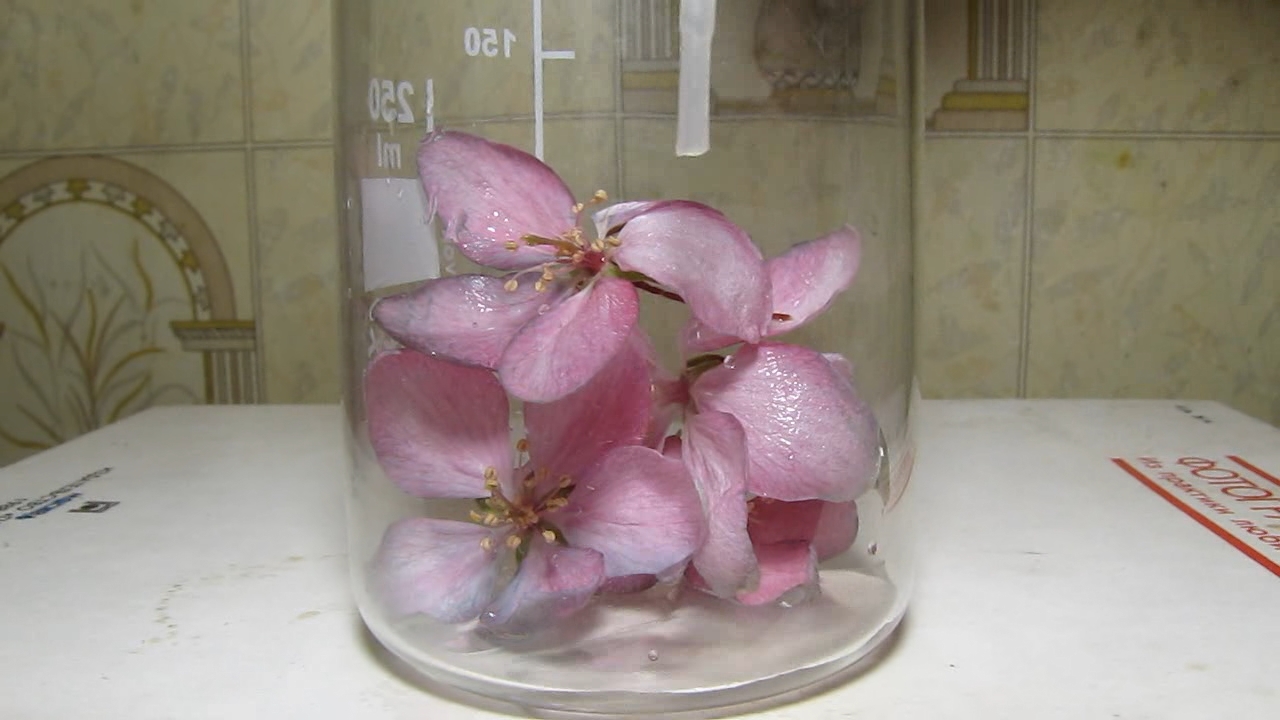
|
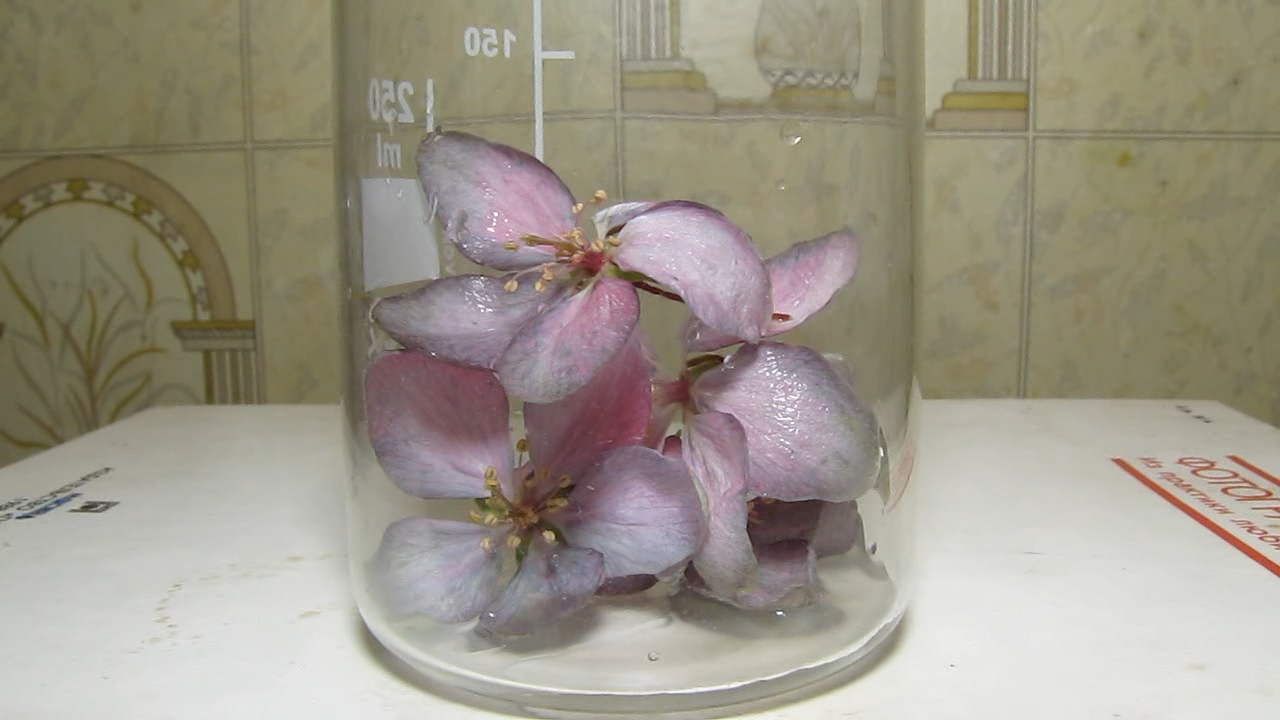
|
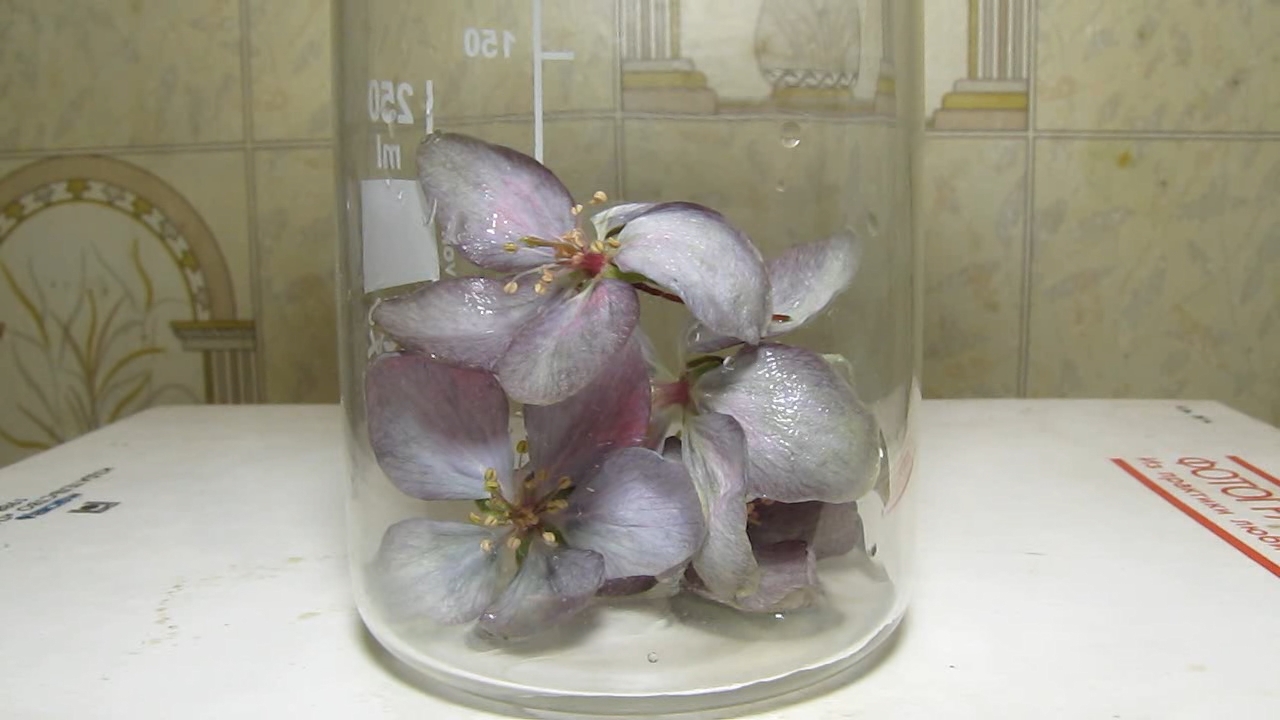
|
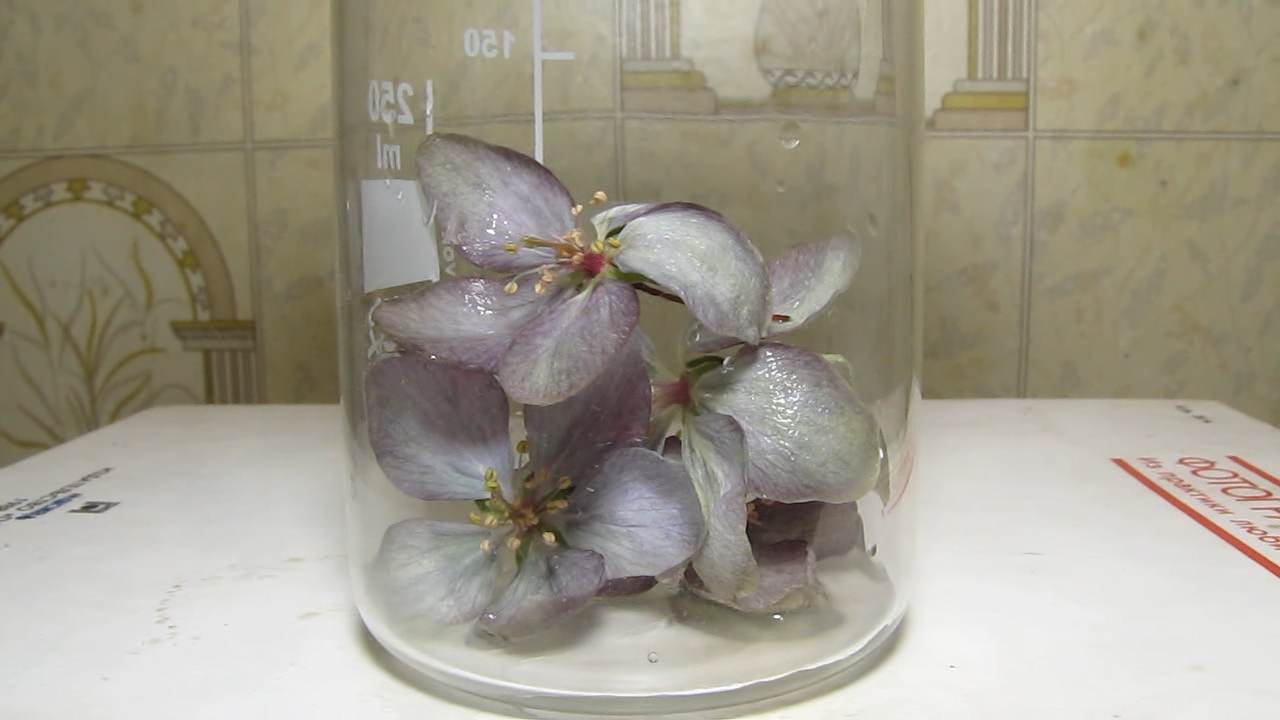
|

|

|
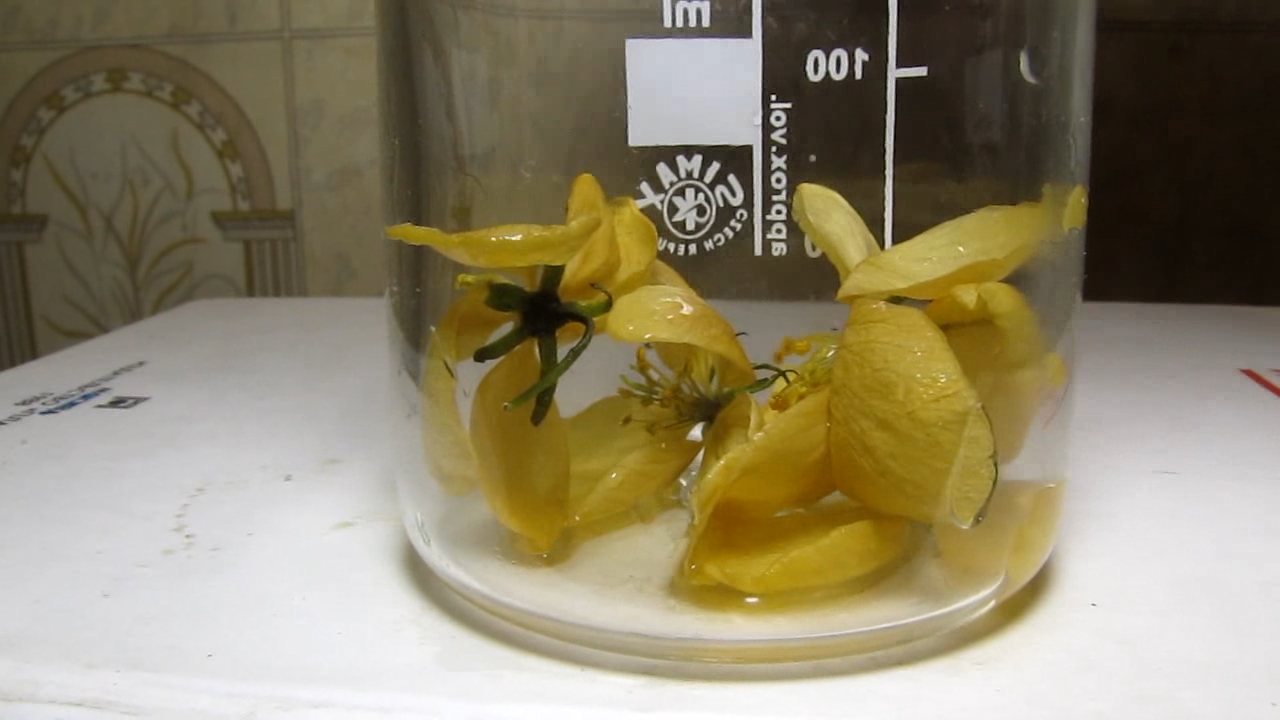
|
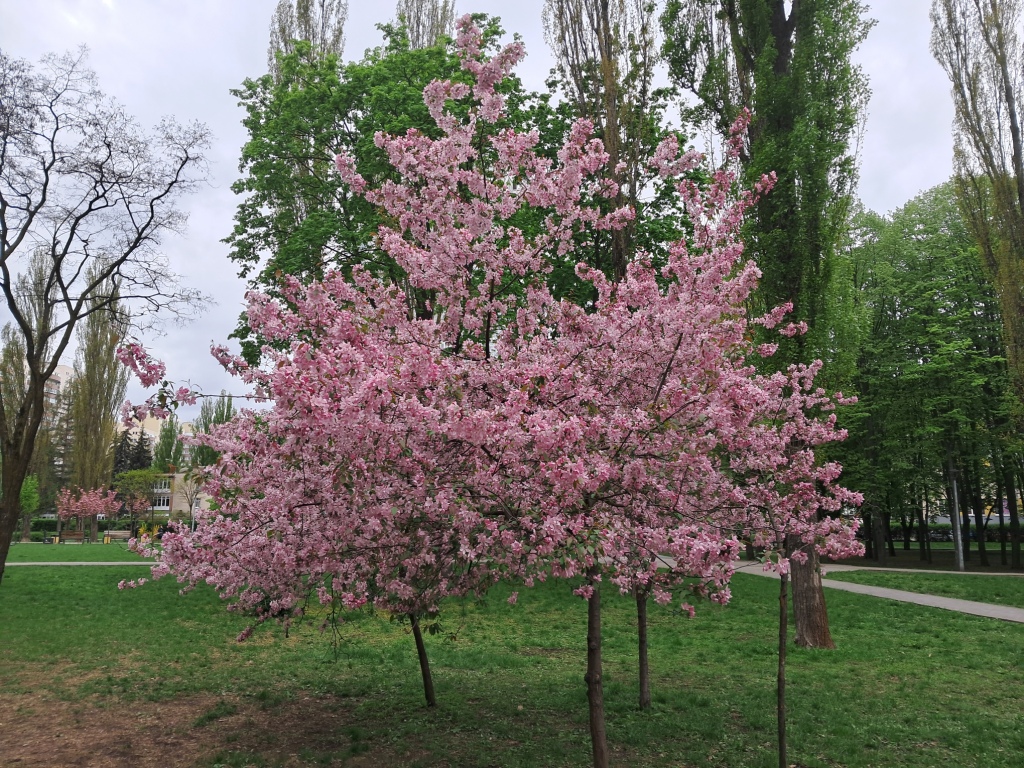
|

|
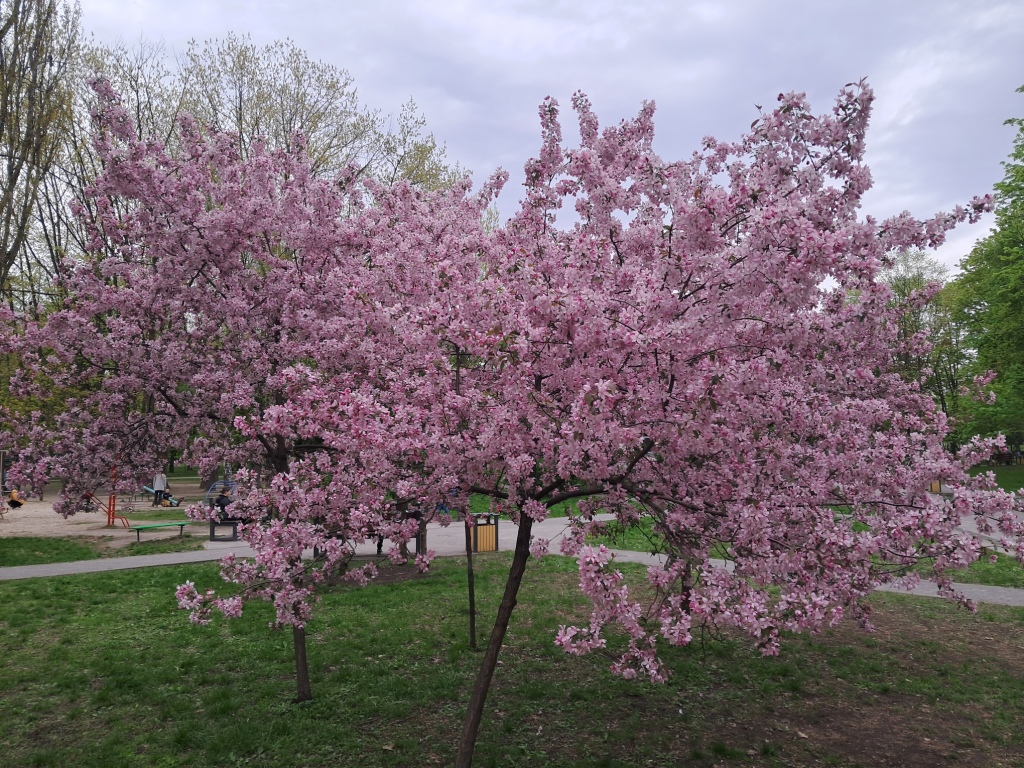
|
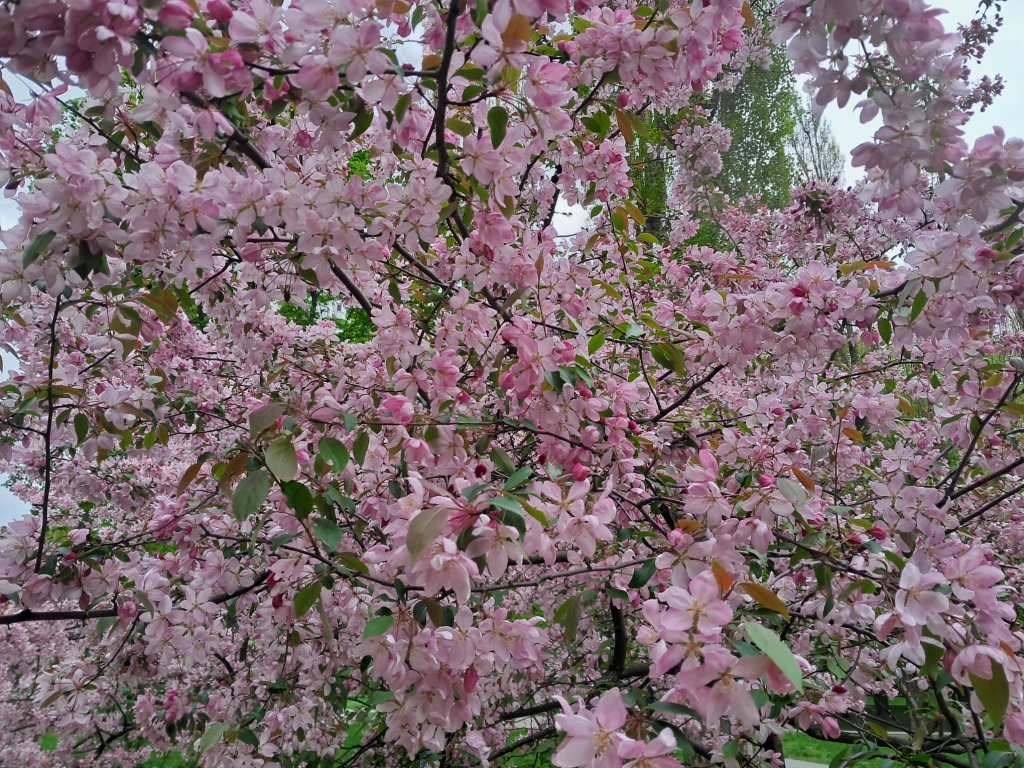
|
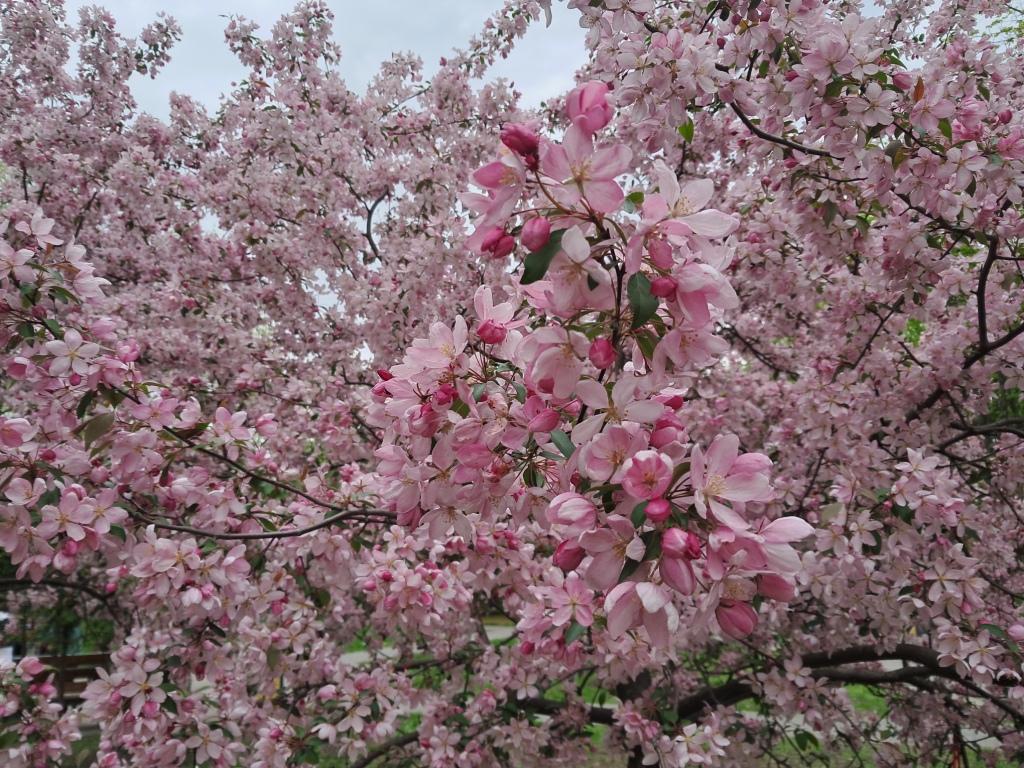
|
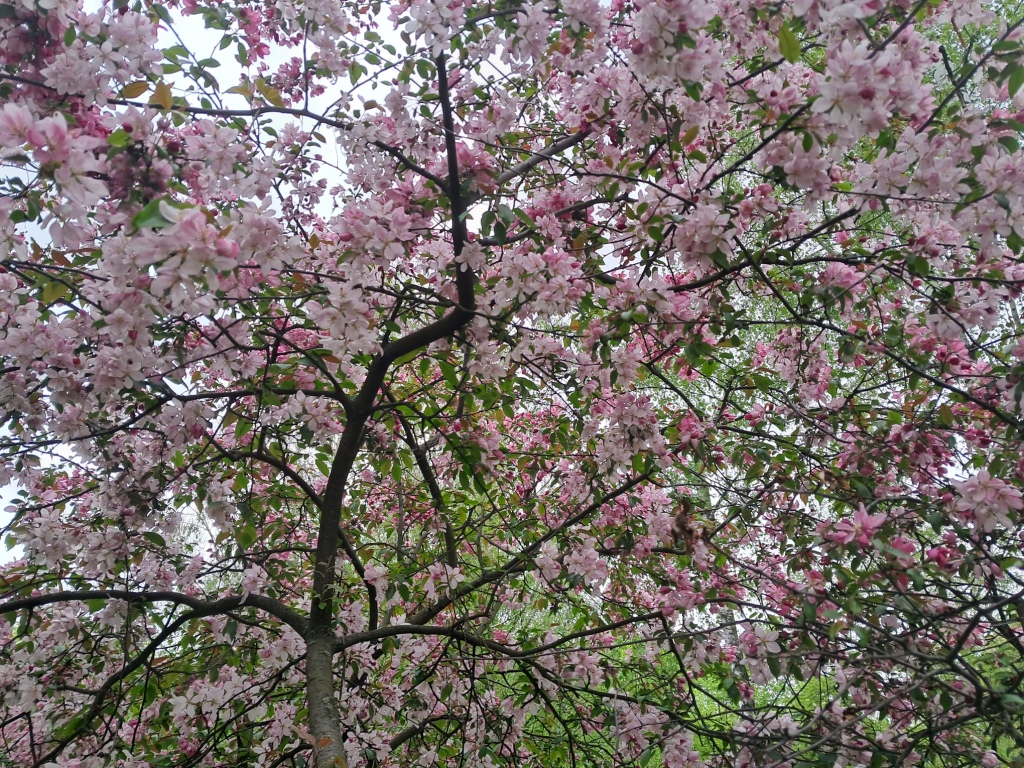
|
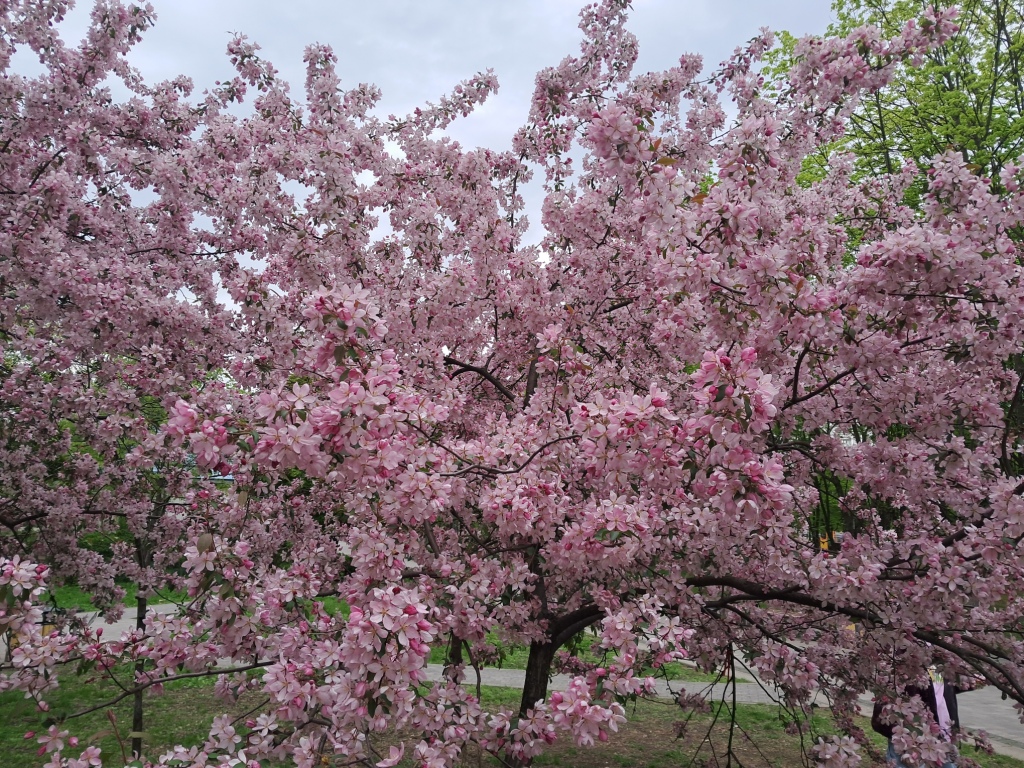
|
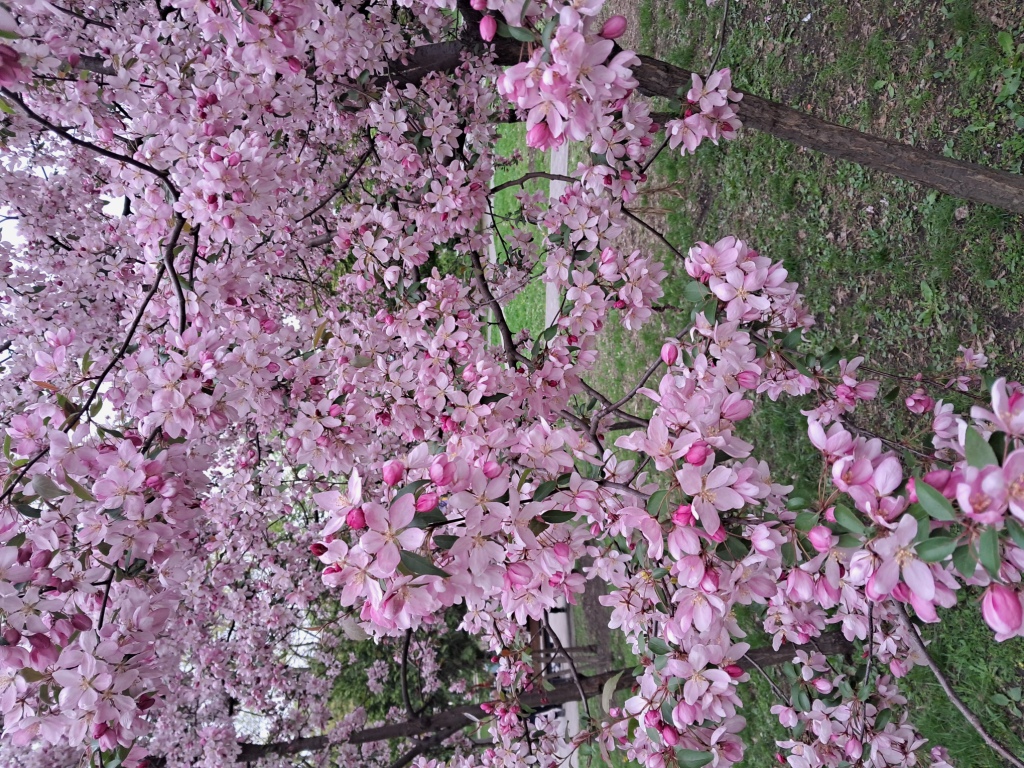
|

|
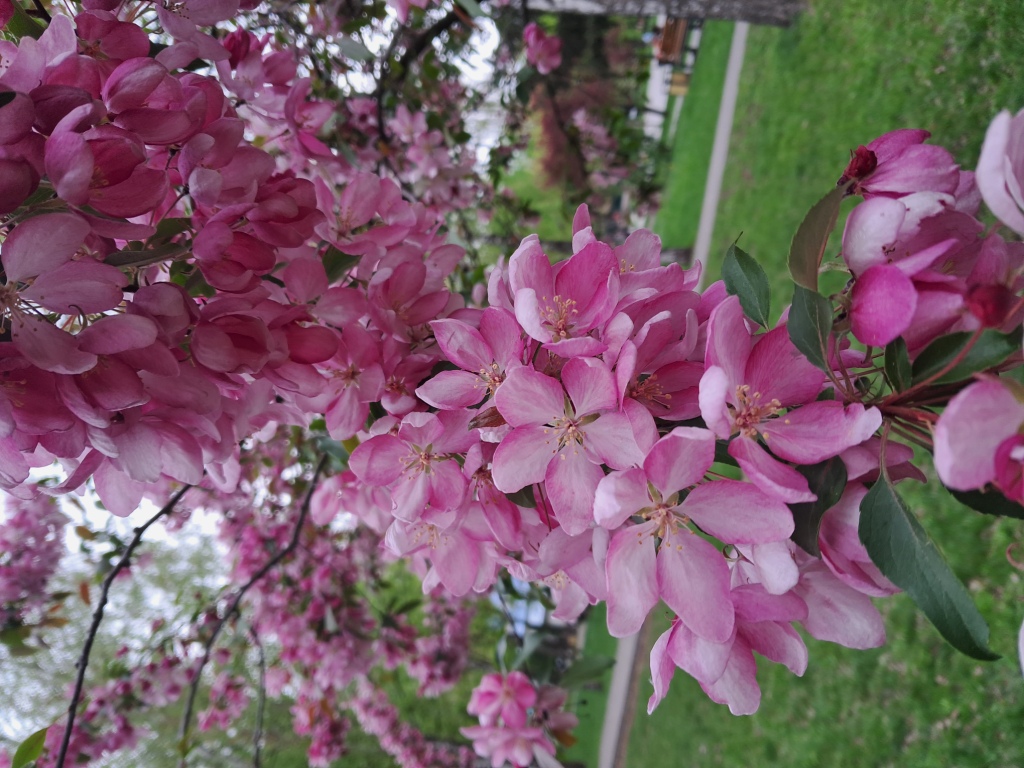
|
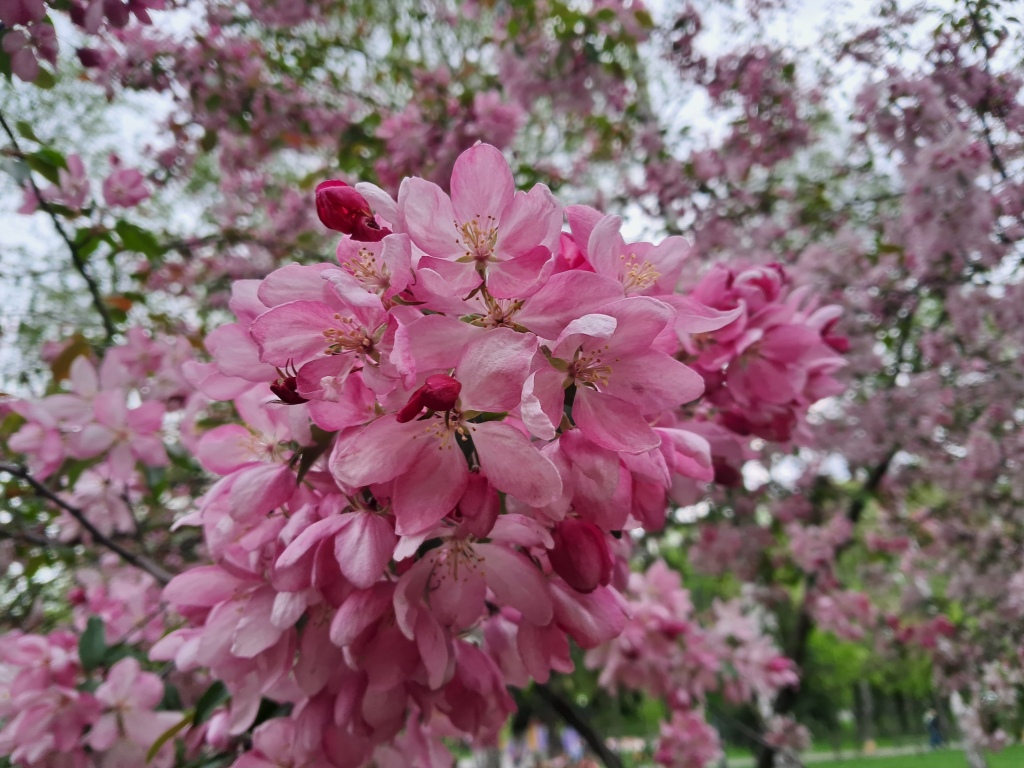
|
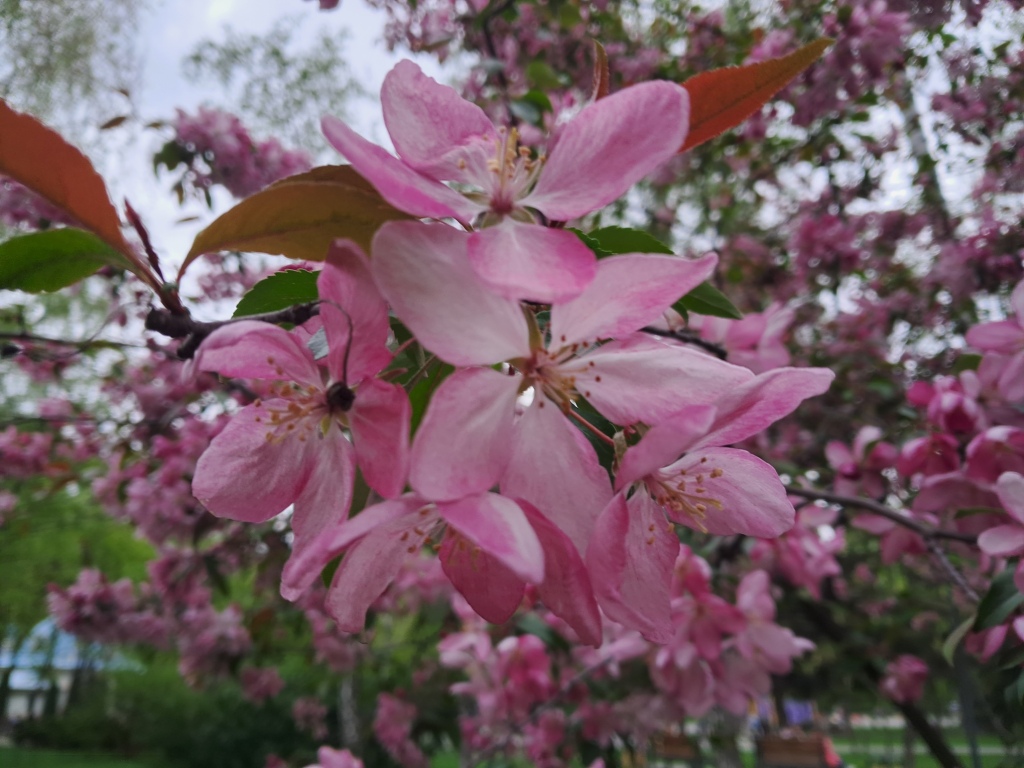
|

|

|

|

|

|
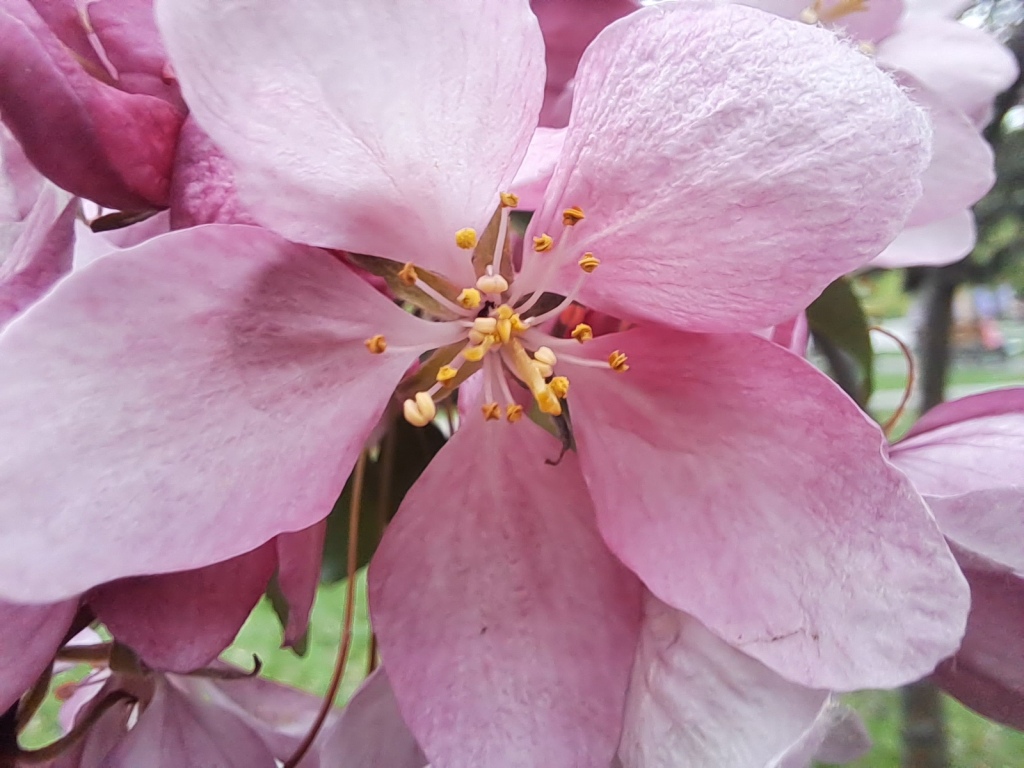
|
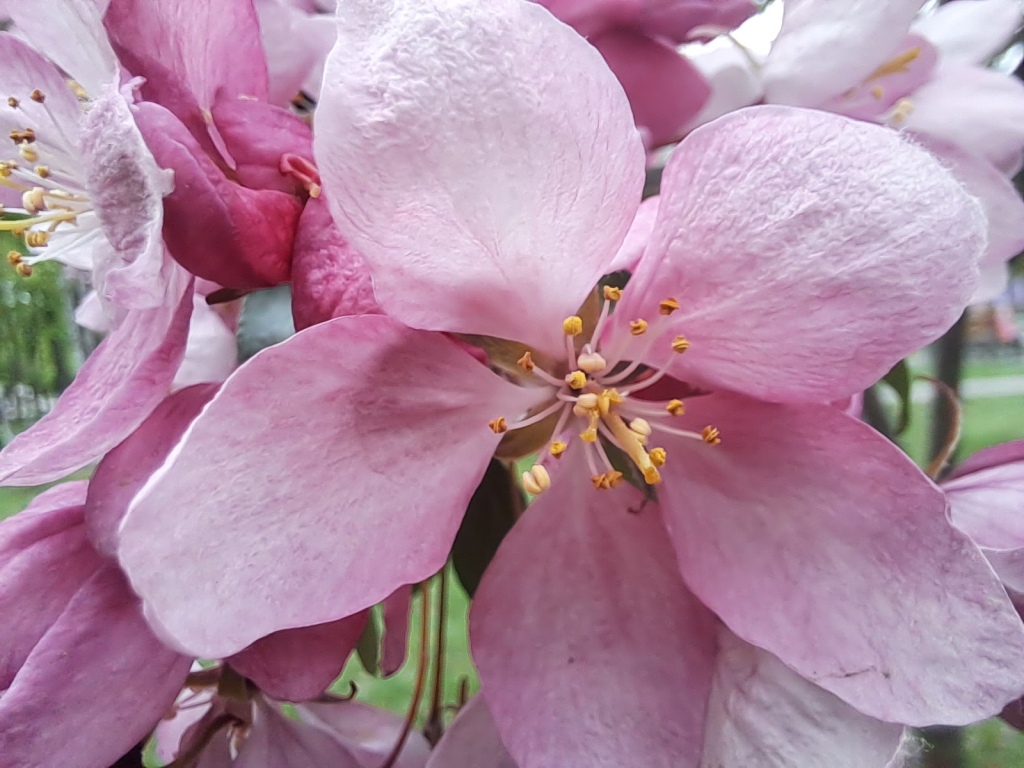
|

|

|
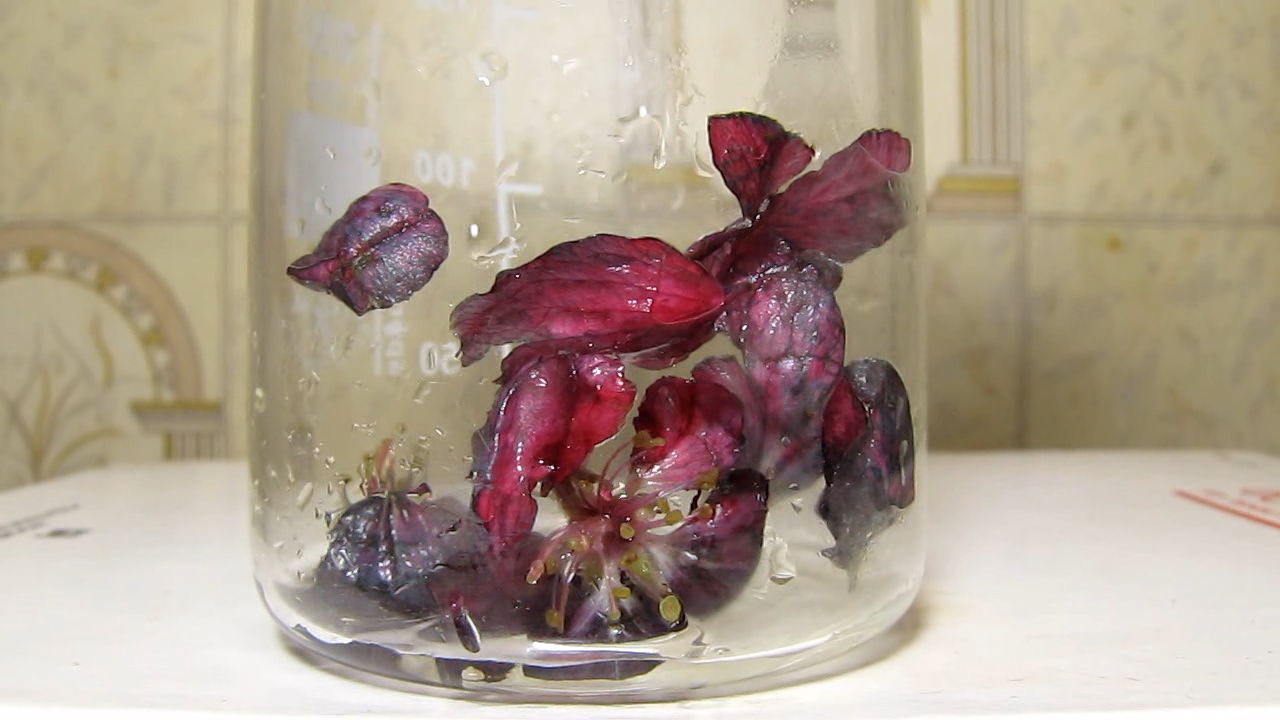
|
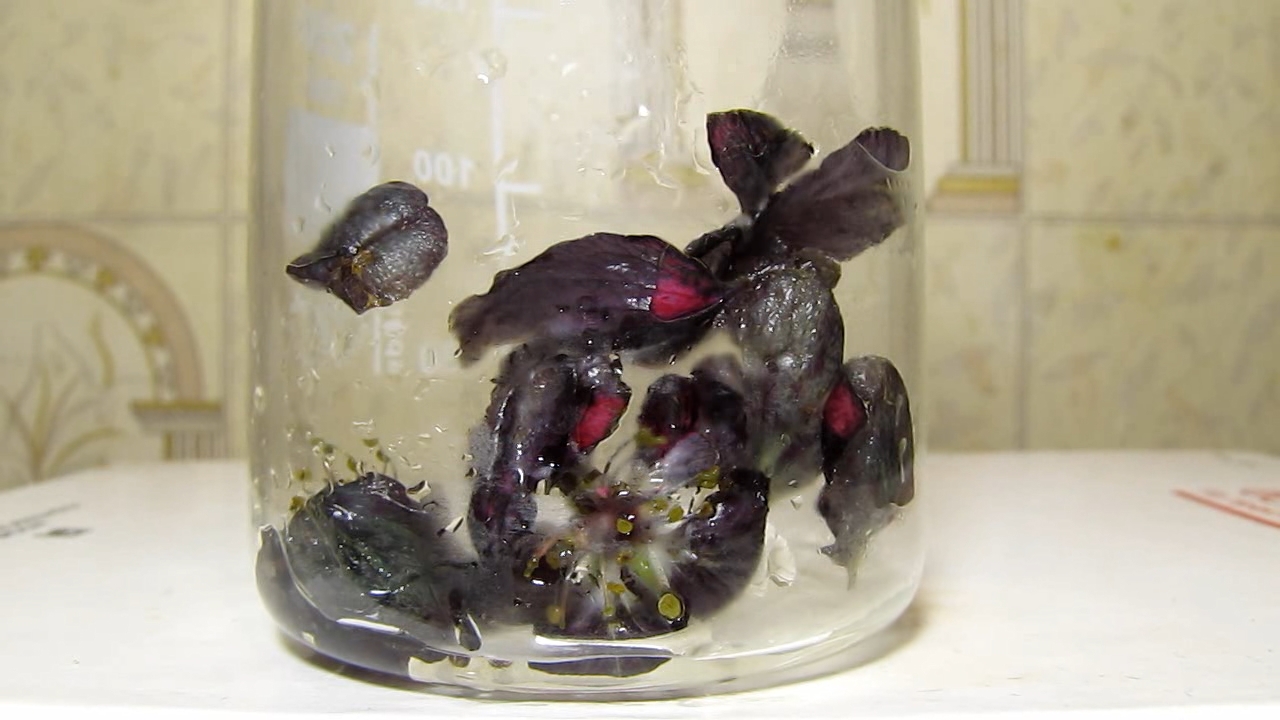
|

|
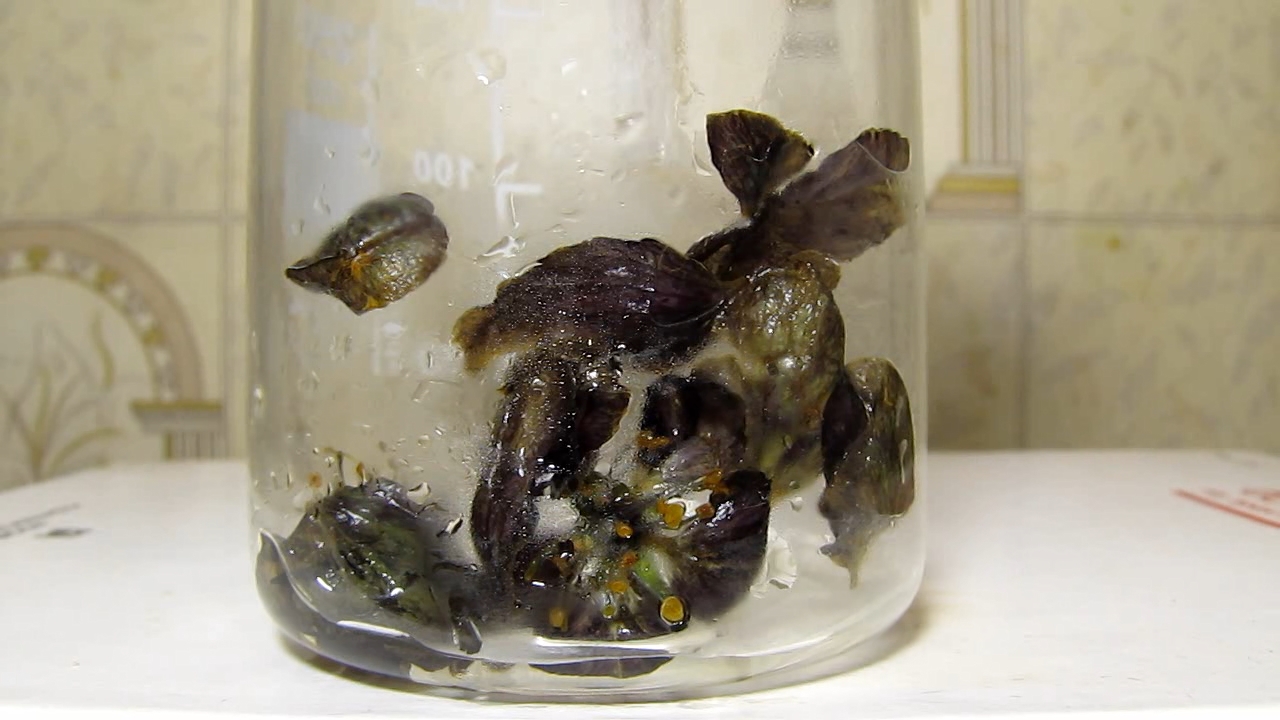
|
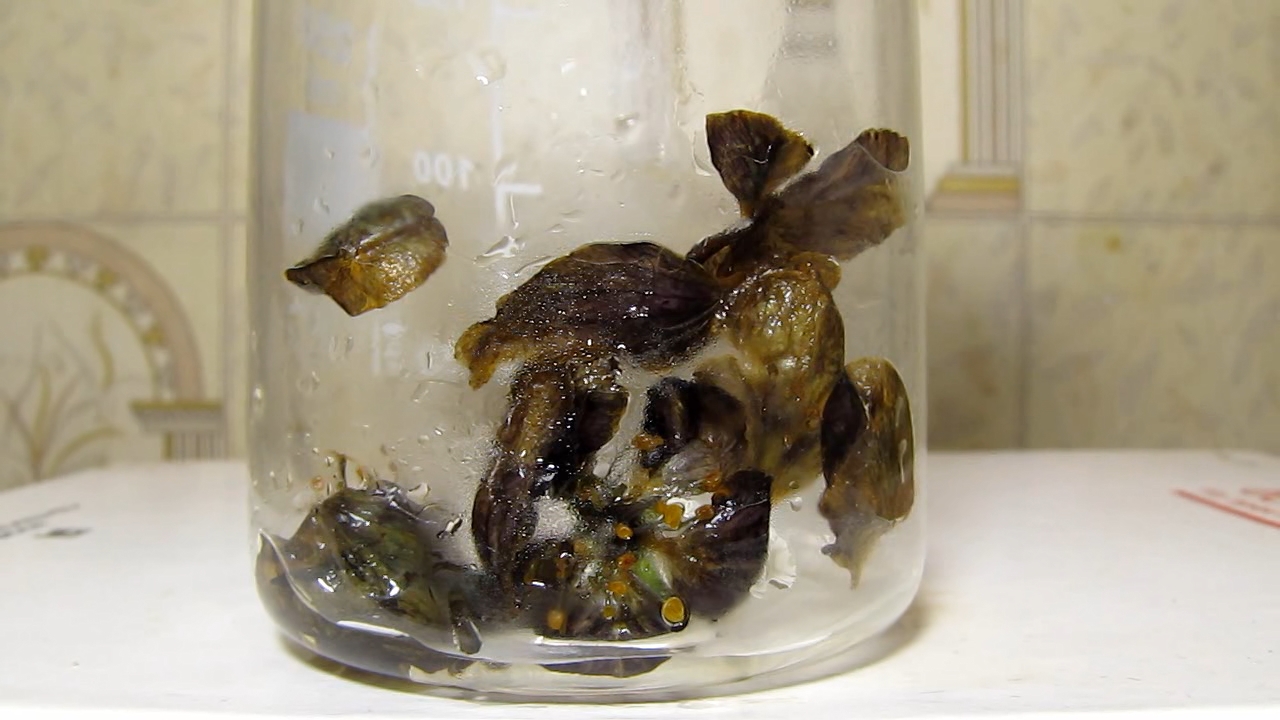
|
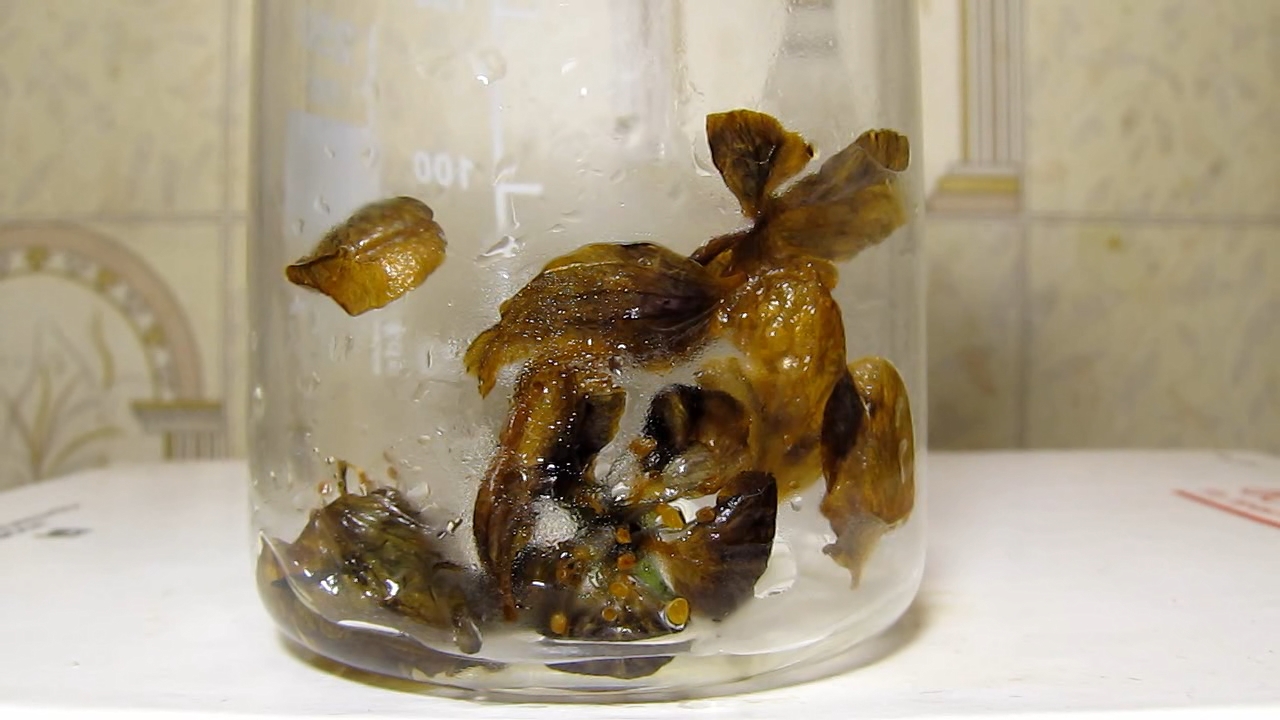
|
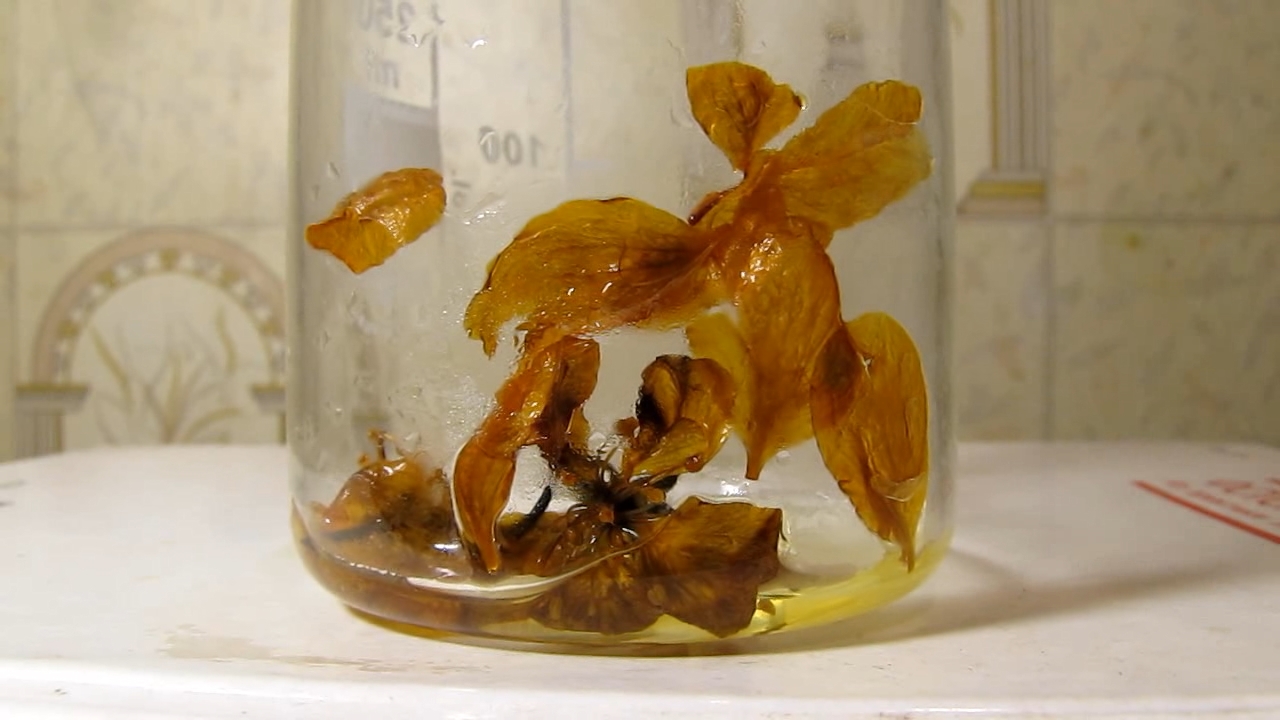
|
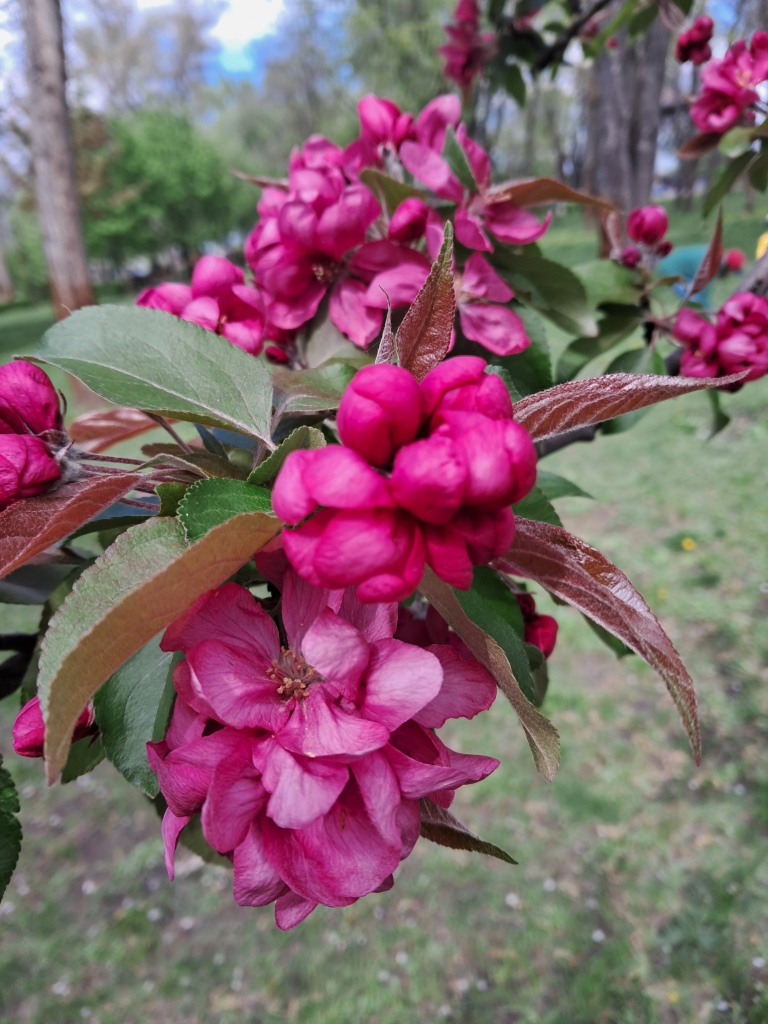
|
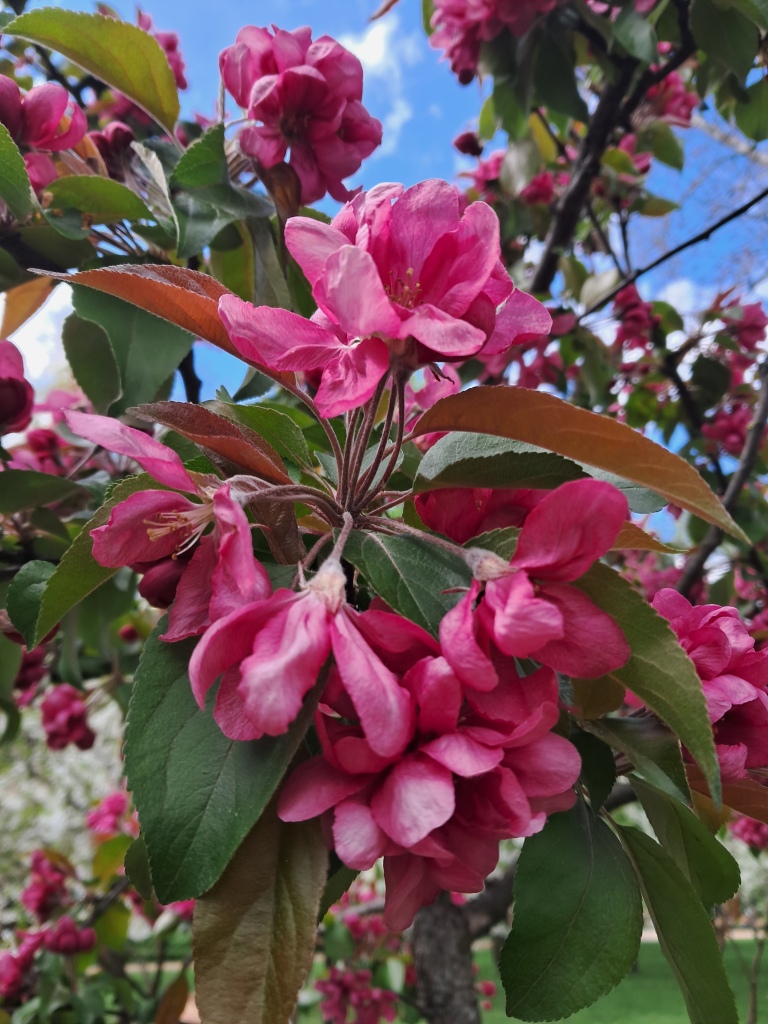
|
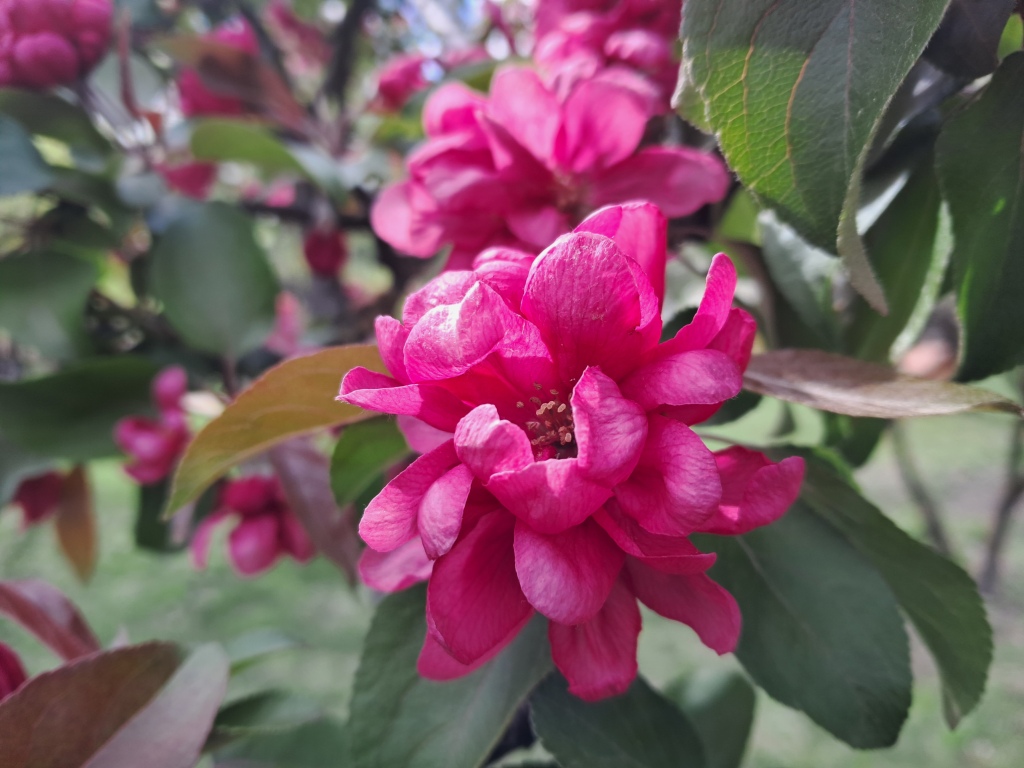
|

|
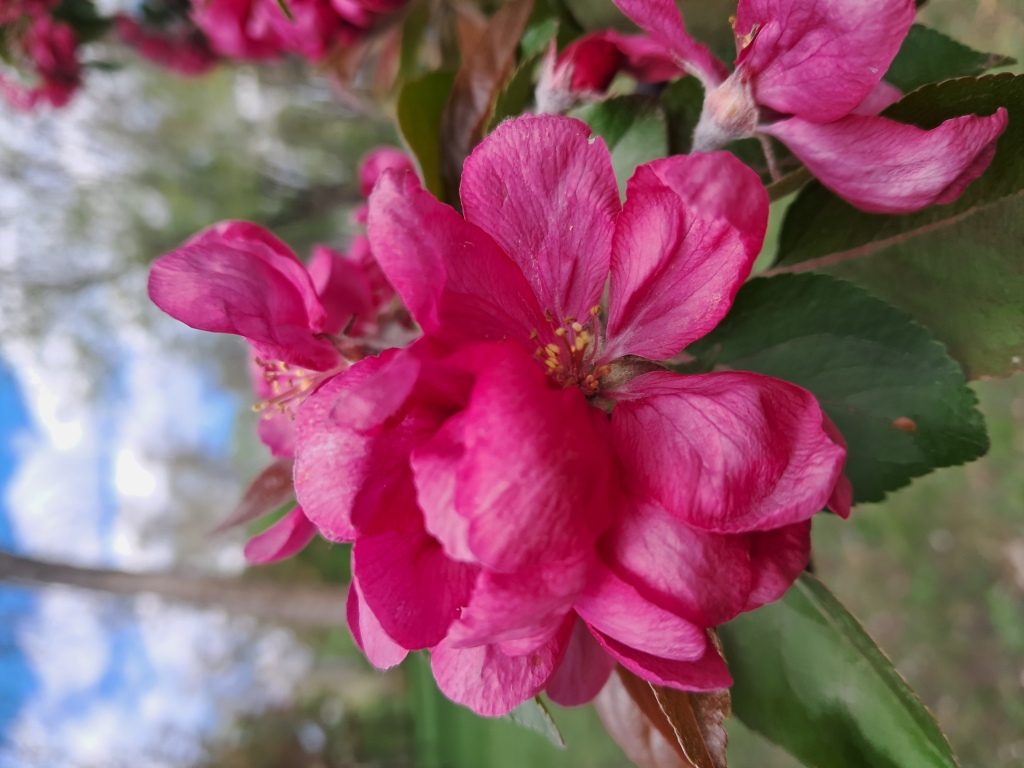
|
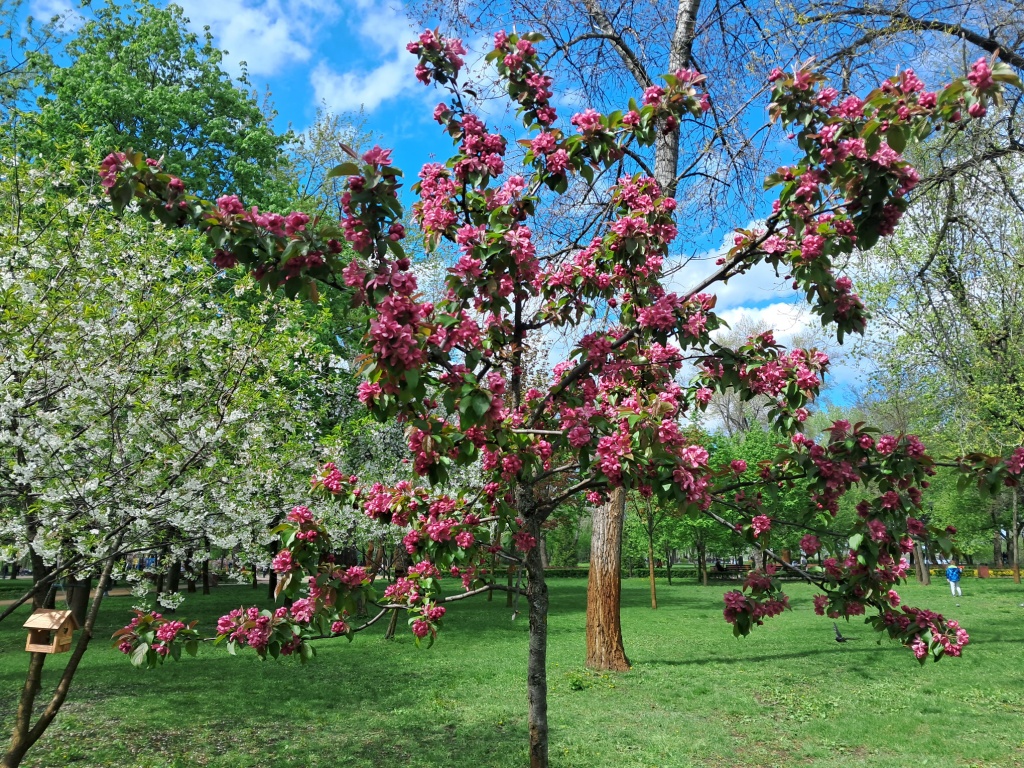
|
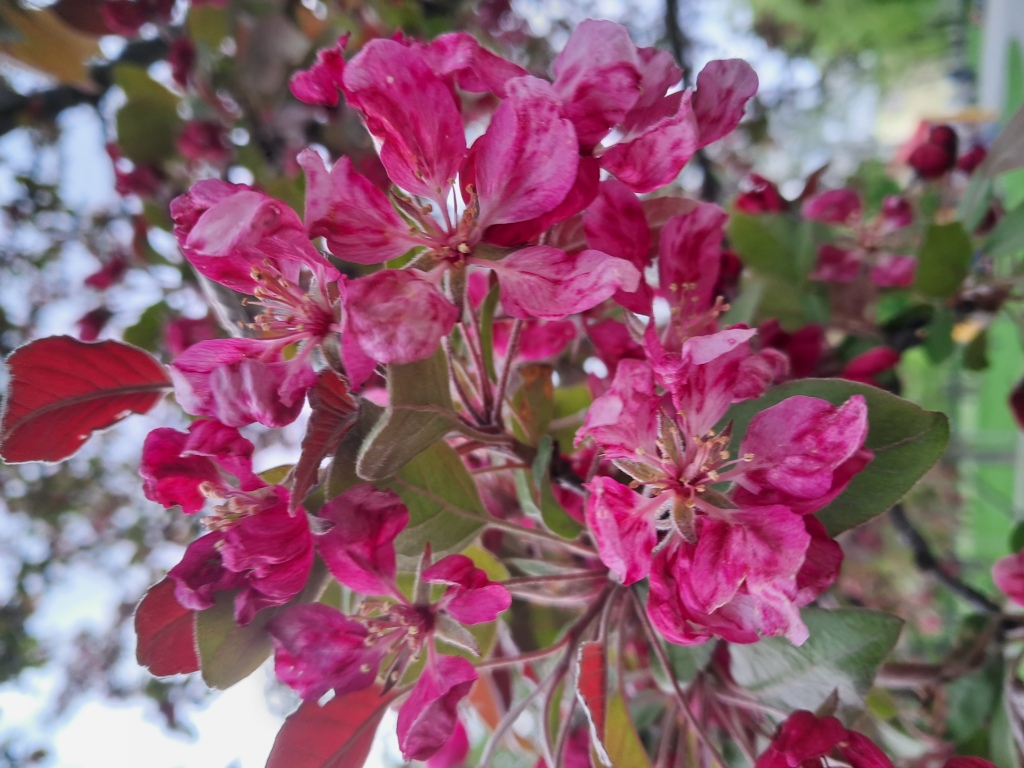
|
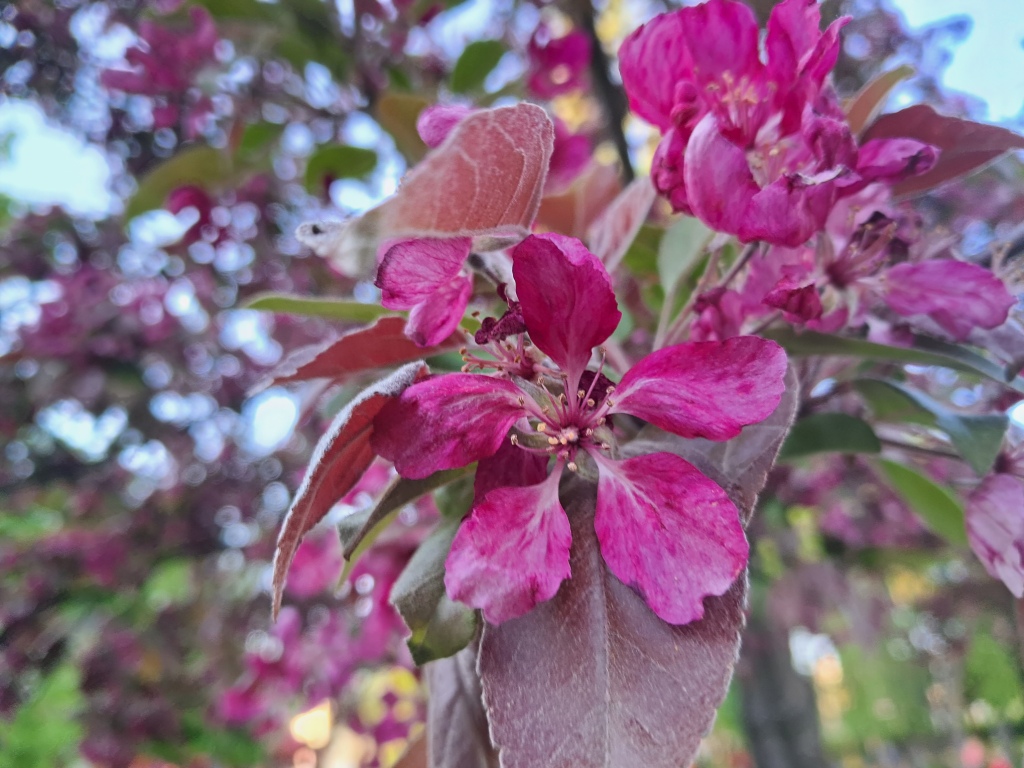
|
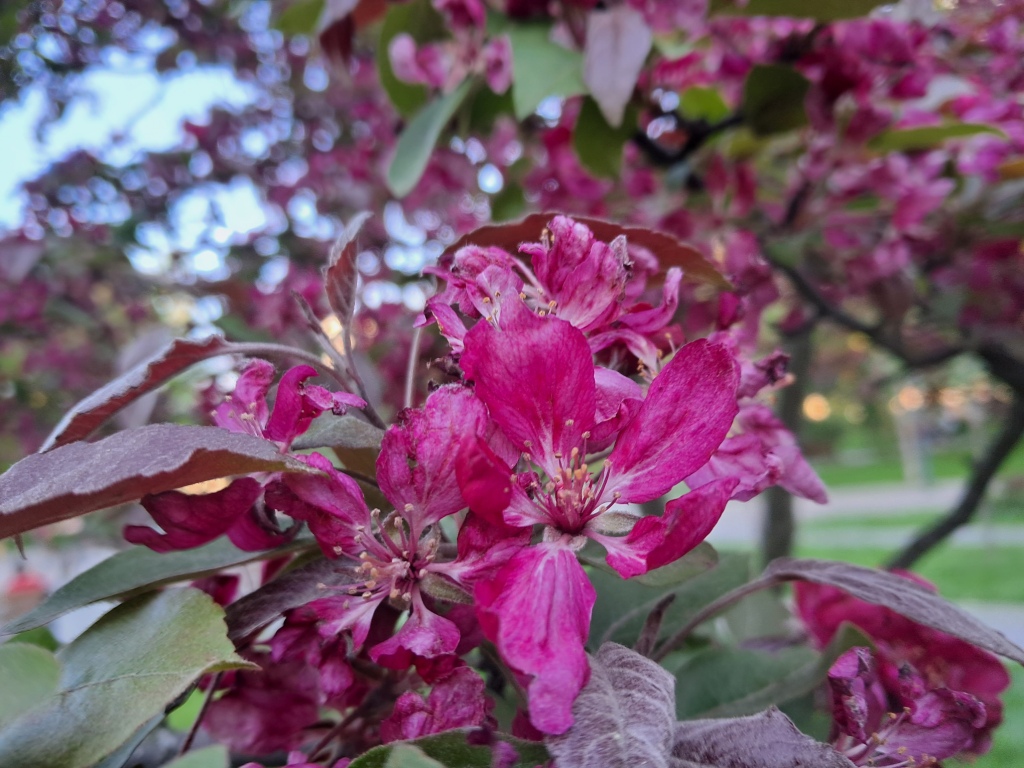
|
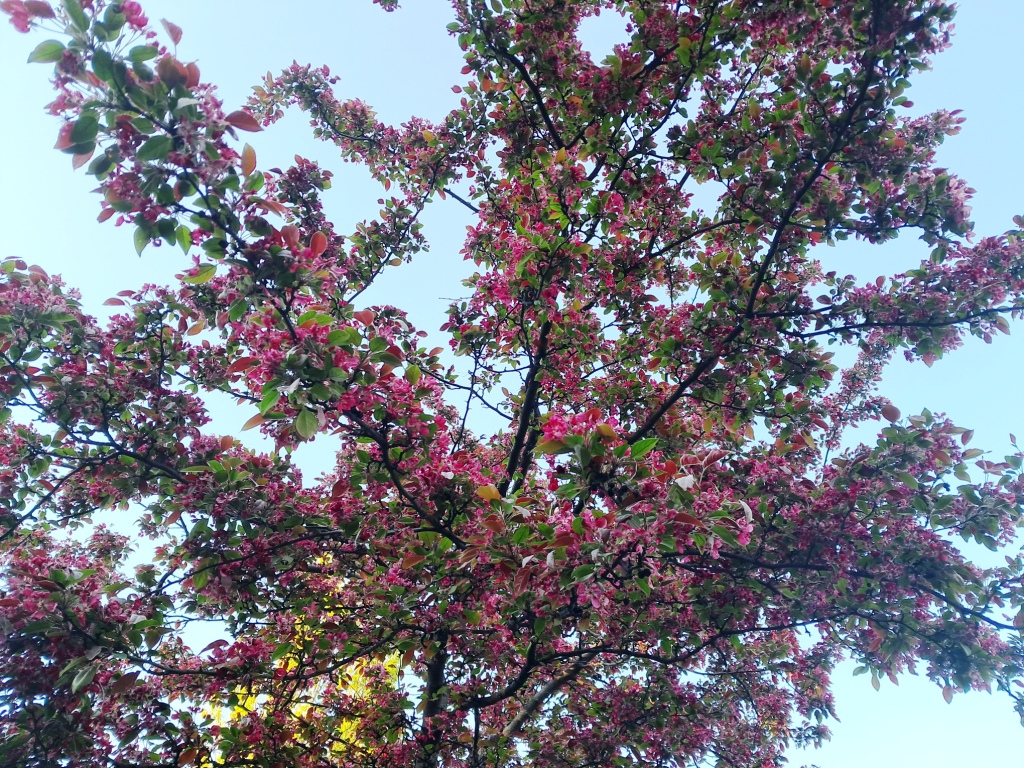
|
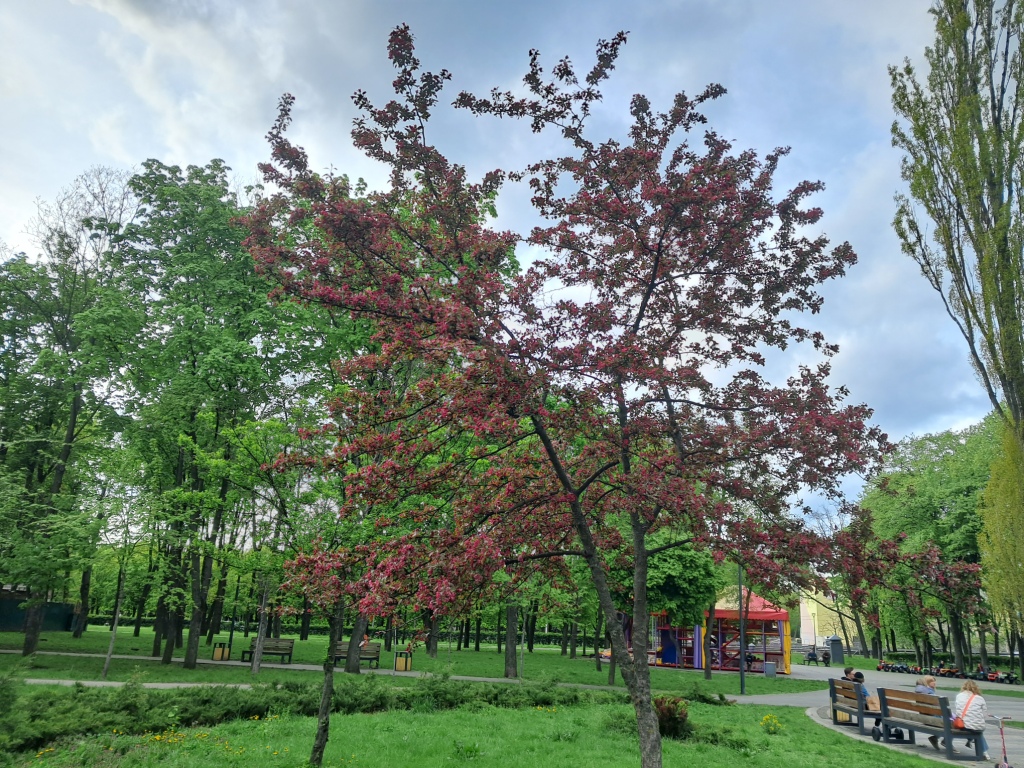
|